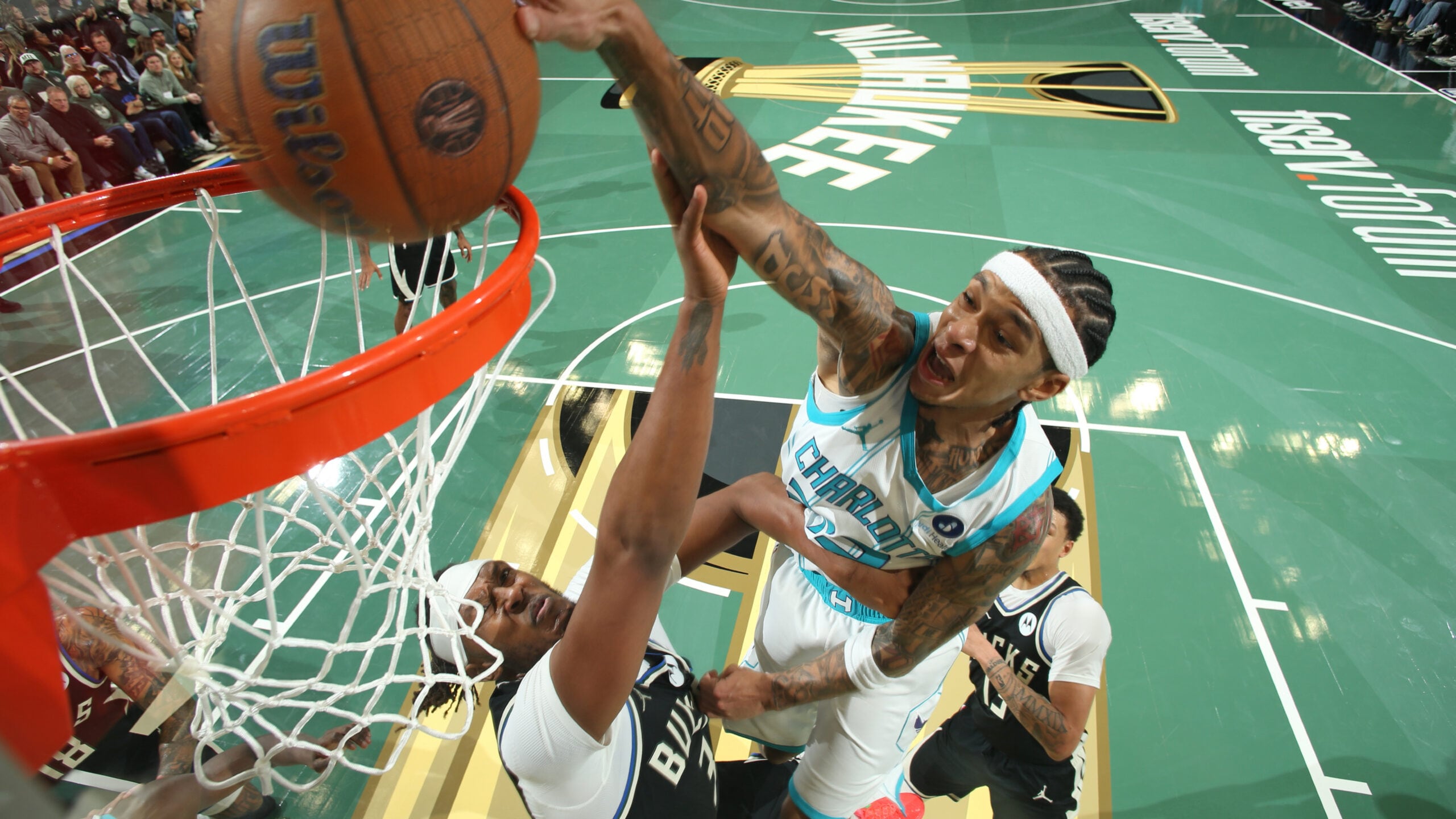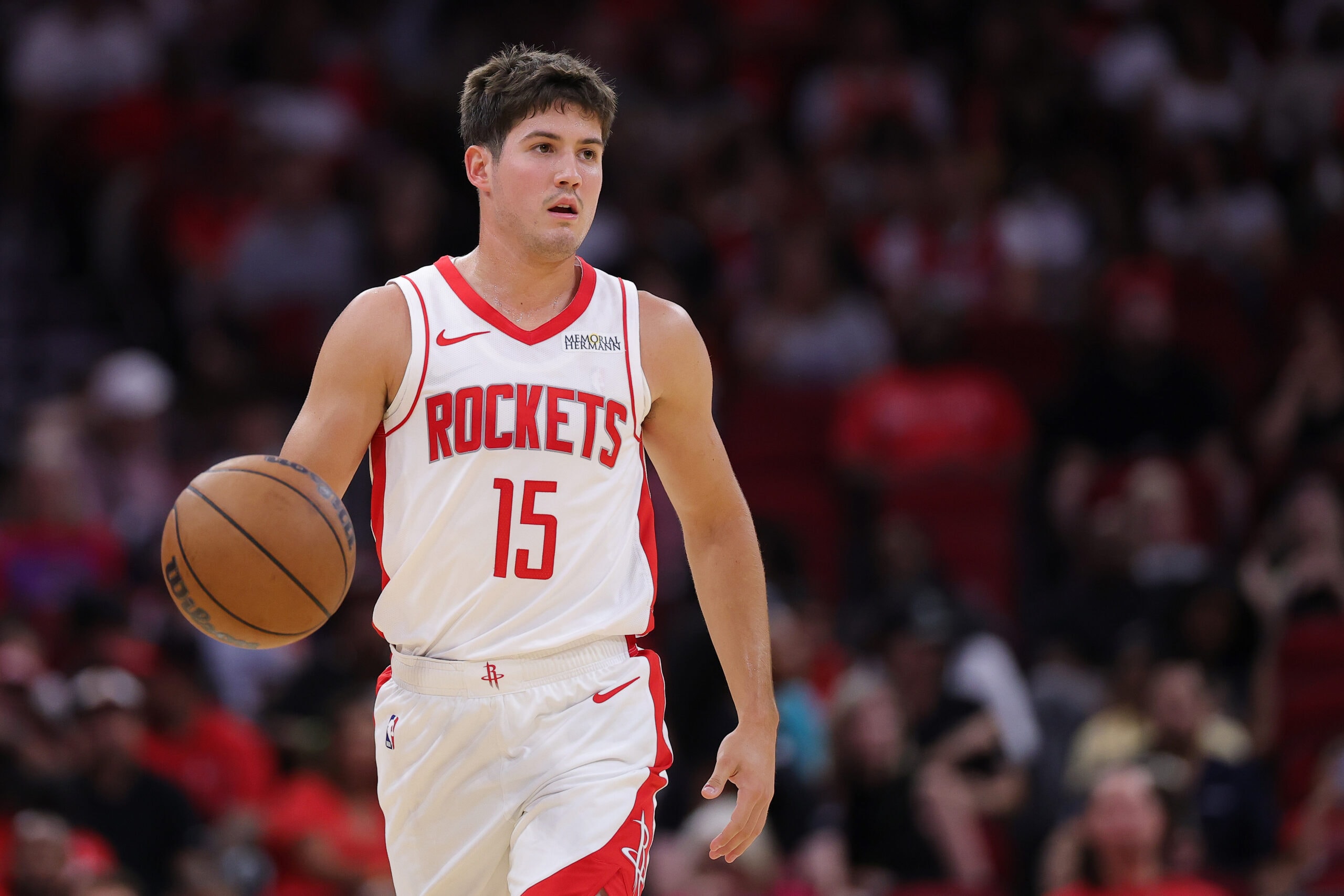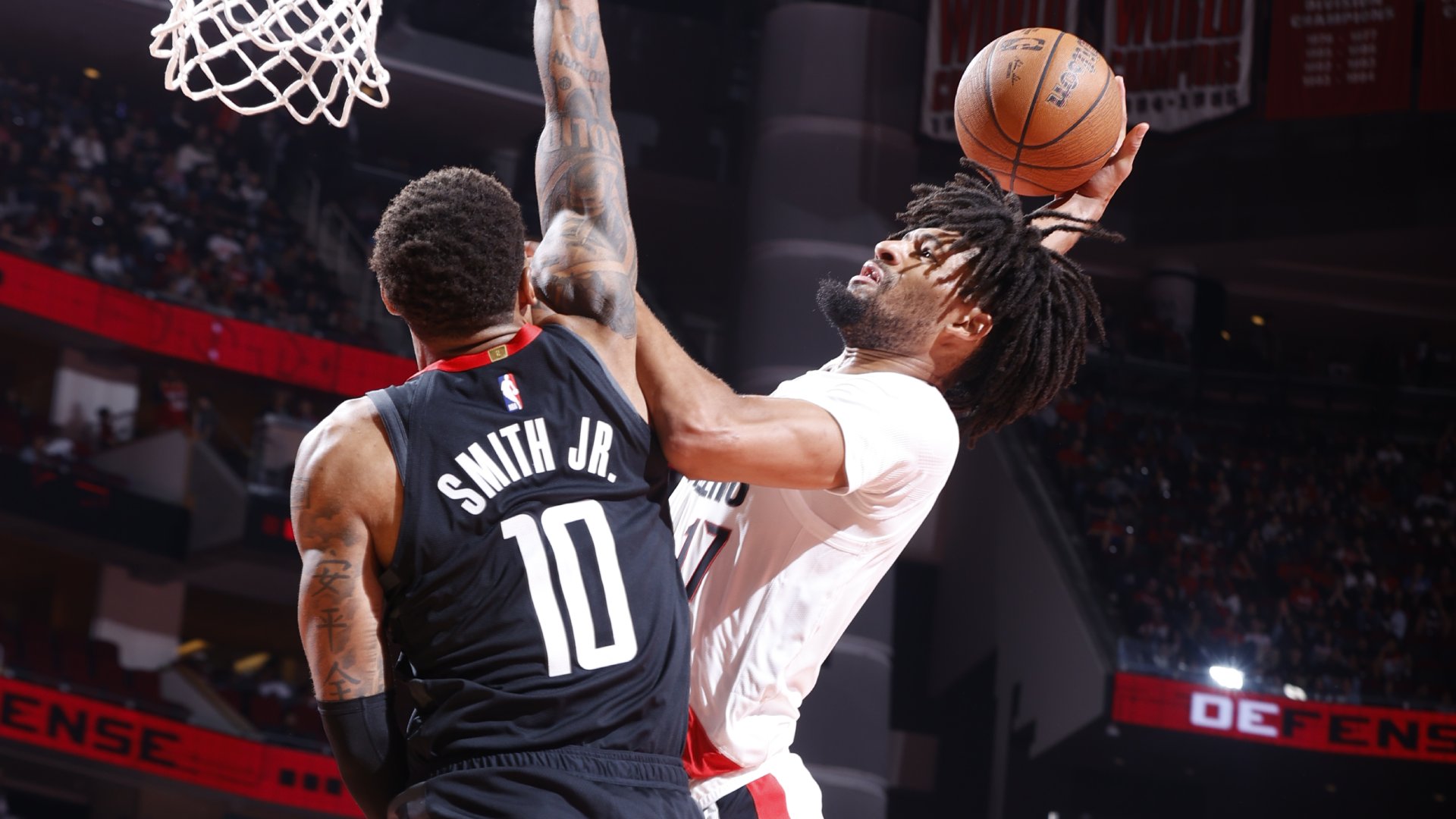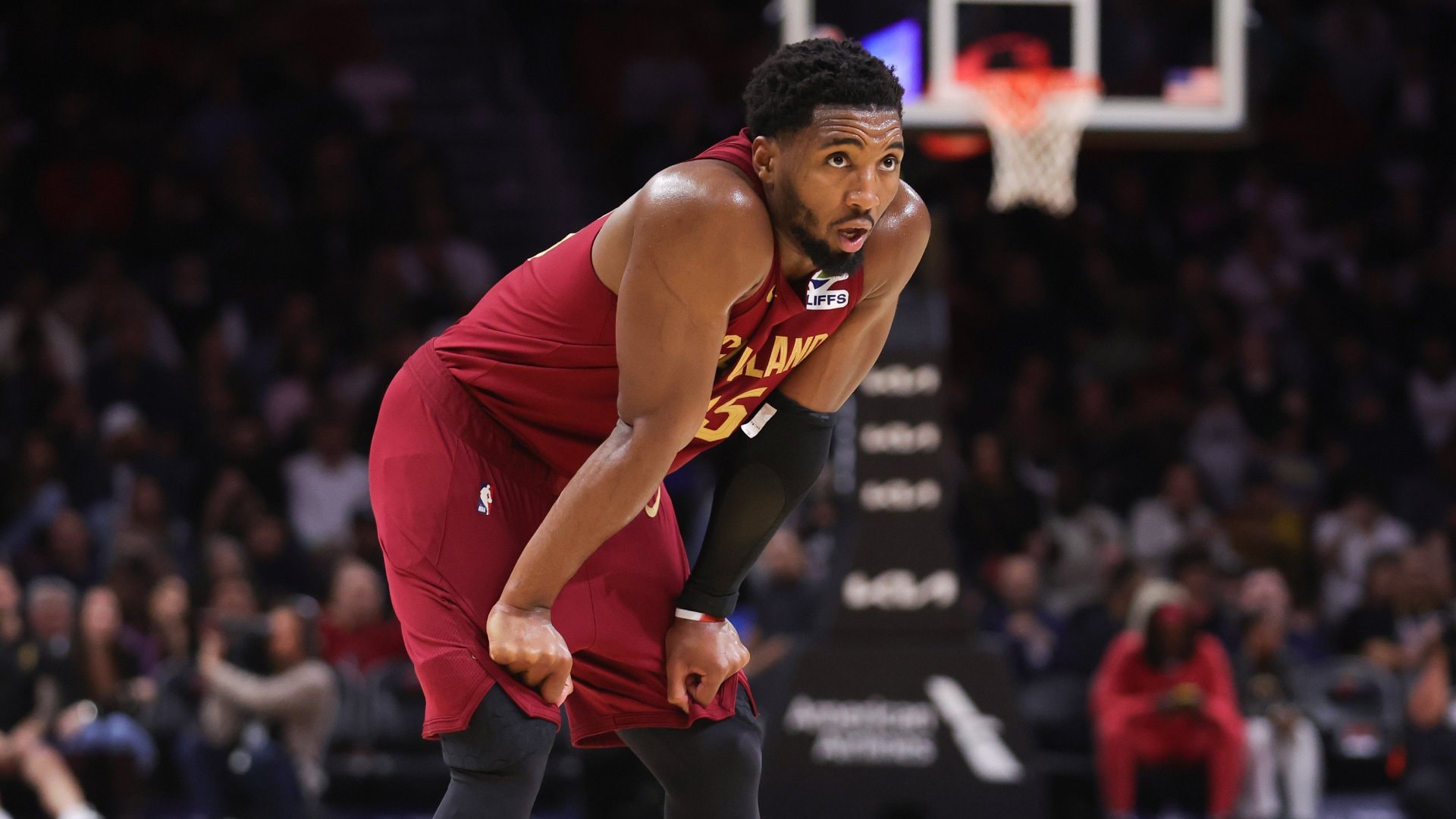Tyrese Haliburton hits a game-winner with 0.3 seconds remaining to cap the Pacers' stunning rally in Game 1 of the NBA Finals.
OKLAHOMA CITY – The Indiana Pacers did it again. But this time, they did it against the best defense in the league.
The Pacers’ offense vs. the Oklahoma City Thunder defense was the featured battle in the NBA Finals, and it was a battle that the Pacers won as they came back from 15 points down early in the fourth quarter to steal Game 1 on Thursday. After scoring just 45 points on 54 possessions (with an amazing 19 turnovers) in the first half, Indiana scored 66 on 48 (with just five turnovers) in the second half.
Down 15 with less than 10 minutes left, the Pacers scored 32 points on their final 19 trips down the floor, a stretch capped by Tyrese Haliburton’s game-winning jumper with 0.3 seconds on the clock. The result was a stunning, 111-110 victory, just the Thunder’s second loss to an Eastern Conference team this season.
Here are some notes, numbers and film on how the Pacers took better care of the ball and found better shots in the second half.
1. Escape the swarm and find good shots
The Thunder have now forced 18.1 turnovers per 100 possessions, easily the highest rate for any team in the last 10 postseasons, and 59% of those turnovers (a relatively high rate) have been live balls. It’s very likely that, by the end of this series, they’ll break the record for most steals in a single postseason.
Their 12 steals in the first half of Game 1 were a record* for any half of an NBA Finals game. They attacked the Pacers when they put the ball on the floor, and they rotated to deflect and intercept passes.
* Steals have been recorded since the 1973-74 season, and the previous record was 10.
The Thunder swarm can be difficult to escape. But if you can escape it, you can get some good shots on the weak side of the floor. Oklahoma City allowed a league-high 4.4 corner 3-pointers per game in the regular season.
The Pacers were 10-for-16 from the corners on Thursday, including 7-for-9 in the second half. And they’re now shooting 48.5% on corner 3s in the playoffs.
Four of the Pacers’ 10 3-pointers in the second half of Game 1 came on the weak side of the floor.
Early in the third quarter, Haliburton used a ball-screen from Myles Turner and, when he picked up his dribble, seemed to be looking to hit Turner rolling to the basket. But Turner’s roll drew multiple Thunder defenders, so Haliburton instead hit Pascal Siakam at the top of the arc. And those multiple defenders in the paint meant that Aaron Nesmith was open on the weak side:
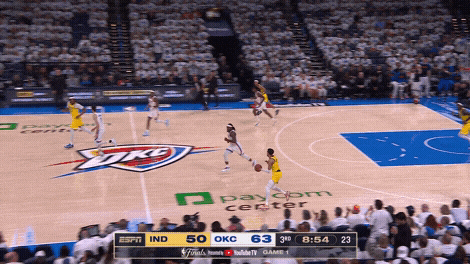
Haliburton now has 31 secondary (hockey) assists in the playoffs, tied (with Stephen Curry in 2022) for the most for any player in any postseason in the 12 years of tracking data.
After a brutal first half, Obi Toppin scored 11 points after halftime, shooting 3-for-4 from 3-point range. The last of his 3s came on the right wing after Nesmith drove from the left side and somehow escaped a swarm of three Thunder defenders in the paint:

That’s one to remember, given how the Thunder defended on the very last Pacers possession.
2. Playing big vs. small
The Pacers had just five points through their first nine possessions of Game 1. But their two field goals both came via a mismatch inside. After switches on the ball, Siakam took Cason Wallace into the post and scored over the top of the 6-foot-3 guard.
Siakam also got three critical points down the stretch when he secured offensive rebounds over smaller Thunder players.
With 3:24 left and Shai Gilgeous-Alexander at the free-throw line, Wallace replaced Isaiah Hartenstein, leaving the 6-foot-6 Gilgeous-Alexander as the tallest Thunder player on the floor. And on the very next possession, Siakam grabbed an offensive rebound over the MVP. He was fouled by Wallace and (after the Thunder committed a lane violation) got one point at the line.
Then, with the Pacers down three and less than a minute to go (and with the Thunder still playing small), Siakam beat Gilgeous-Alexander to another offensive rebound. He put that one back in the basket to make it a one-point game:
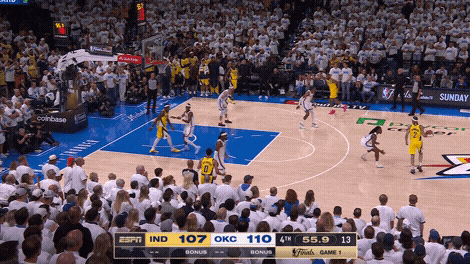
The Thunder played a little more than seven minutes with neither Chet Holmgren nor Hartenstein on the floor, and they were outscored by seven points (getting outrebounded 11-2) in that time. Overall, they grabbed 52.9% of available rebounds when Hartenstein was on the floor, but just 38.4% when he was off the floor.
3. Pacers beat Caruso … again and again
One of the more fascinating plays of the game was the Pacers’ last possession of the third quarter. T.J. McConnell had the ball up top, with Alex Caruso guarding Siakam in the right corner. Bennedict Mathurin, being guarded by Gilgeous-Alexander, came up from the right block to set a ball-screen for McConnell.
Gilgeous-Alexander could certainly have switched that screen and defended McConnell. But Caruso seemingly wanted in on the action, switching onto Mathurin as he approached the ball. That left Siakam alone in the corner, and McConnell quickly and brilliantly fired the ball there, catching Caruso in the middle of his pre-switch:
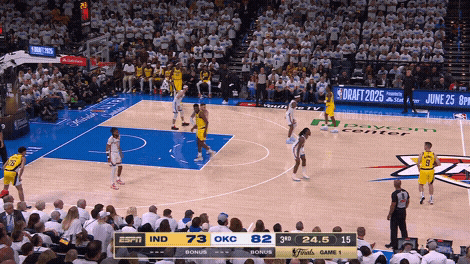
Early in the fourth quarter, Mathurin beat Caruso twice, first on an out-of-bounds play and then on a drive to the rim.
The final bucket of the game was another incredibly clutch shot from Haliburton, but also a missed opportunity for Caruso.
As Haliburton crossed the midcourt line (defended by Wallace), Caruso was in position to double-team him. But that would have left Siakam alone (again) on the right side of the floor. Nesmith was coming from the left side with a screen, but Haliburton probably didn’t want to get a second defender (Gilgeous-Alexander) involved. So he kept going to his right.
With three seconds left, Caruso took a step toward the ball, and if he continued, maybe he would have forced Haliburton into a much tougher shot. But he instead retreated to Siakam, who was diving toward the rim.
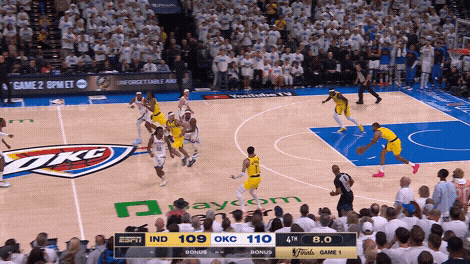
Maybe he didn’t trust that he had help behind him. Maybe Haliburton looked him off with a glance toward Siakam’s cut. Maybe he really didn’t want Siakam to grab another offensive rebound. Whatever the case, Caruso retreated instead of opting for maximum aggressiveness, which is what got him and the Thunder to this point.
If there were a “Defensive Player of the Playoffs” award through the first three rounds, Caruso may have been the winner. But in Game 1 of the Finals, he was at the center of a few big possessions as the Pacers found their offense in the second half.
We can probably expect better from both teams in Game 2 on Sunday (8 ET, ABC).
* * *
John Schuhmann is a senior stats analyst for NBA.com. You can e-mail him here, find his archive here and follow him on X.
The views on this page do not necessarily reflect the views of the NBA, its clubs or Warner Bros. Discovery.





